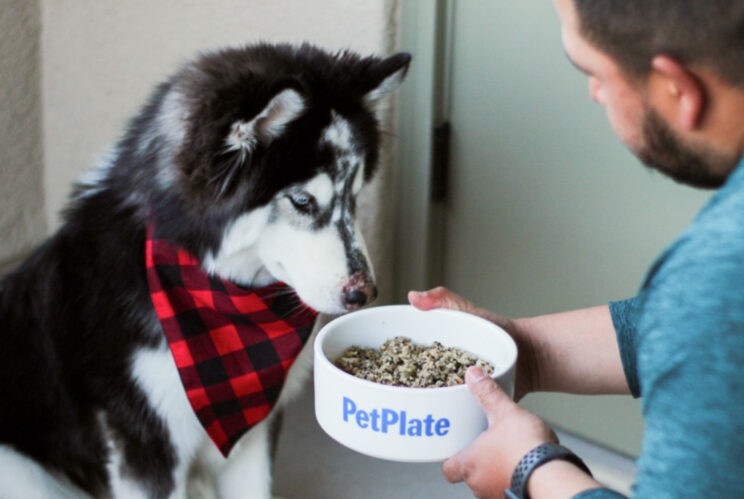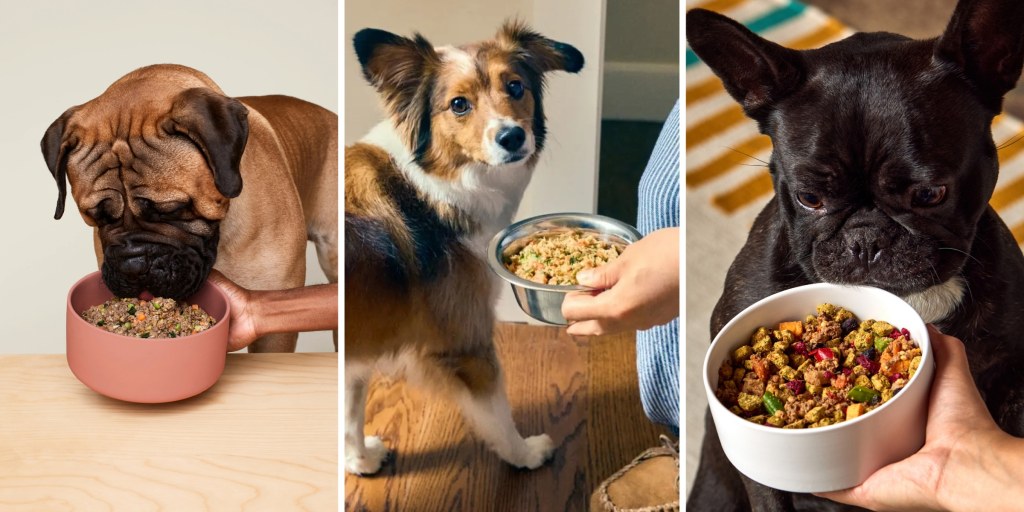Choosing what to feed your dog is one of the most important decisions you make as a pet parent. Food affects everything — energy, digestion, coat quality, weight, long-term health, and even behavior. That’s why more owners are moving toward human-grade dog food, a category that promises cleaner ingredients, higher standards, and improved nutrition.
But what exactly makes human-grade food different? And is it really better for your dog?
This article breaks down the benefits, explains how to choose the right brand, covers potential drawbacks, and helps you understand whether this feeding approach is the right choice for your best friend.
1. What “Human-Grade” Really Means
The term human-grade means the ingredients and manufacturing processes meet the standards required for human food production. This includes:
-
Sourcing ingredients fit for human consumption
-
Processing food in inspected facilities
-
Avoiding low-quality by-products and rendered materials
-
Using clean, traceable, whole-food ingredients
In other words, human-grade dog food must be produced as safely and cleanly as food made for people. It raises the baseline quality far above the typical “feed-grade” requirements used for most kibble.
2. Why Human-Grade Dog Food Is Gaining Popularity
More pet owners are questioning what’s in their dog’s bowl. With traditional feed-grade foods, ingredients can legally include lower-quality proteins, fillers, questionable by-products, and heavily processed ingredients.
Human-grade formulas challenge that by offering:
-
Cleaner recipes
-
Real, whole ingredients
-
Higher nutritional density
-
Shorter ingredient lists with fewer additives
This shift represents the same trend seen in human nutrition: the desire to eat less processed, more recognizable food — and to offer the same quality to dogs.
3. Key Health Benefits of Human-Grade Dog Food
✔ Better Digestibility
Research shows that dogs absorb nutrients more effectively from high-quality, lightly processed foods. Human-grade diets often result in:
-
Smaller, firmer stools
-
Less gas
-
Reduced bloating
-
More consistent digestion
This is especially helpful for dogs with sensitive stomachs.
✔ Shinier Coat & Healthier Skin
Better proteins and balanced fats — particularly omega-3s — often lead to:
-
Shinier, softer fur
-
Fewer hotspots
-
Less shedding
-
Reduced itchiness
Dogs prone to allergies or skin irritation may see quick improvements.
✔ Improved Energy & Weight Maintenance
Whole-food carbs like sweet potatoes or brown rice release energy slowly, helping:
-
Stabilize energy levels
-
Prevent sugar crashes
-
Maintain healthy weight
Active dogs may show increased stamina, while senior dogs may regain vitality.
✔ Reduced Risk of Allergies
Because ingredients are cleaner and more transparent, it becomes easier to identify triggers. Many owners report fewer symptoms when switching dogs with chronic allergies to human-grade formulas.
4. Transparency and Trust: A Major Advantage
High-quality human-grade brands usually disclose:
-
The source of their meat
-
Where ingredients are grown
-
How recipes are prepared
-
Third-party nutritional testing results
With feed-grade food, this level of detail is rare. Transparency gives you peace of mind, especially if your dog has health conditions.
5. Not All Human-Grade Foods Are Equal
Just because a label says “human-grade” doesn’t mean the food is ideal. Here’s what to look for:
A. Complete and Balanced (AAFCO)
Make sure the food meets official nutrient standards. Some fresh foods are supplemental only and not meant as full meals.
B. Real, Named Proteins
Look for labels such as:
-
Chicken
-
Turkey
-
Beef
-
Salmon
Avoid vague wording like “meat meal” or “animal protein.”
C. Clear Ingredient Sourcing
Reliable brands clearly state where their ingredients come from.
D. Recipes Formulated by Veterinary Nutritionists
Nutrition expertise matters. Avoid brands that do not employ or consult certified experts.
E. Third-Party Testing
Food safety testing for contaminants and nutrient accuracy is a strong signal of quality.
6. How to Transition Your Dog Safely
A slow transition prevents stomach upset. Use this guideline:
-
Days 1–3: 25% new food, 75% current food
-
Days 4–6: 50% new, 50% current
-
Days 7–9: 75% new, 25% current
-
Day 10+: 100% new food
During the switch, monitor stool consistency, appetite, and energy levels.
7. When Human-Grade Is Especially Worth Considering
Human-grade food is ideal for:
Senior dogs
They benefit from more digestible, nutrient-dense meals.
Dogs with sensitive stomachs
Simple, whole ingredients reduce irritation.
Dogs with skin allergies
Cleaner proteins help eliminate triggers.
Picky eaters
Fresh human-grade foods are naturally more appetizing.
Pet parents who value transparency
You know exactly what you’re feeding.
8. Potential Downsides to Consider
While there are many benefits, it’s important to acknowledge the trade-offs:
Higher Cost
Human-grade food can be 2–5× more expensive than typical kibble due to better ingredients and stricter processing standards.
Storage & Convenience
Fresh foods may require:
-
Refrigeration
-
Portion measurement
-
Frequent deliveries
Overexpectations
A better diet improves health, but it’s not a cure for underlying medical conditions. Always consult your vet for chronic issues.
9. Final Thoughts: Is Human-Grade Really Worth It?
For many dogs, yes — absolutely.
Human-grade dog food offers:
-
Superior ingredient quality
-
Better digestion
-
Stronger nutrient absorption
-
Healthier skin and coat
-
Transparently sourced recipes
It’s one of the most reliable ways to ensure your dog is eating clean, safe, nutrient-dense meals.
But the “best” diet is one that balances:
-
Your dog’s needs
-
Your lifestyle
-
Your long-term budget
-
Your vet’s recommendations
If you’re looking for maximum quality and peace of mind, human-grade dog food is one of the strongest choices you can make for your dog’s nutrition and overall well-being.
Your dog depends on you — and choosing cleaner, safer food is one of the most powerful ways to support their health and happiness for years to come.



